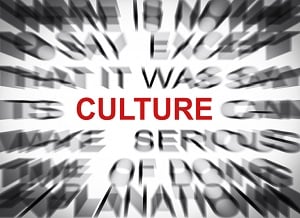We talk to Alan Heyward about how companies can drive positive behavioural change.

In order to create a vibrant, sustainable culture that allows a company to drive positive behavioural change, it’s essential for recognition to be viewed as a strategic organisational imperative, rather than an HR initiative.
That’s according to Alan Heyward, executive manager at Accumulate.
However, that is not to underestimate the role HR needs to play in establishing and reinforcing a recognition culture.
“HR can play a lead role in consolidating the disparate strands of recognition across the organisation into a framework that is consistent, integrated (ie everyday recognition through to annual awards), visible and measurable,” Heyward told HC.
“It can help create an environment that allows the organisation to harness the inherent strength of its employee communities, by fostering greater connection and collaboration, greater knowledge-sharing, and greater understanding and appreciation – across teams and across borders.”
It can also role-model the desired behaviours – both personally, and by identifying and empowering recognition advocates across the business to do so.
“Importantly, HR can facilitate the generation of deeper insights into drivers of employee engagement, by utilising multiple HR data points beyond recognition (e.g. performance ratings, attrition, absenteeism, engagement survey results, etc),” said Heyward.
“These insights can be used for everything from recognition program enhancements to key influencer identification as part of a broader organisational talent mapping program.”
But HR’s ability to influence will of course depend heavily on the level of buy-in and active support of the entire senior leadership team.
In order for HR to get buy-in from staff and the c-suite for this type of culture it’s important to go about creating a measurable ROI, added Heyward.
“Show them evidence of where a strong recognition culture has driven significant, sustainable behavioural change in like organisations; whether it be unifying a merged workforce, embedding cultural values, or driving individual performance improvement and bottom line results,” he said.
“Use market research and various internal employee data points to establish causal relationships between recognition and a range of engagement drivers to clearly illustrate its strategic importance.”
Heyward added that to engage staff, it’s about making recognition highly visible, and creating a natural, elegant and delightful user experience.
“It’s about making the context for recognition clear and delivering a highly personalised experience, and connecting people on both a professional and personal level to create a true sense of community,” he said.
“Err on the side of over-communicating via a range of internal channels, although relevance and value are obviously key.”
Recent stories:








